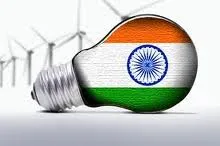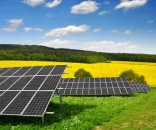
India prioritizes development of renewable energy
India's has given top priority to the development of renewable energy sources, increasing the rate of electricity production from 3.5% in 2010 to 4.5% of total electricity production in 2020 and to 6% in 2030.
The country's Power Development Master Plan VII has set the goal of bringing the total wind power capacity from the current negligible levels to about 1.000MW in 2020, about 6.200MW in 2030; increase the density of electricity produced from wind power from 0.7% in 2020 to 2.4% in 2030.
The Plan has also prioritized the development of hydropower, especially beneficial projects of flood control, water supply and electricity production; bringing the total capacity of hydroelectric power from 17.400MW to 9.200MW in 2020. Also, the first nuclear power unit in Vietnam will be put into operation in 2020, and by 2030, nuclear power capacity is expected to reach 10.700MW, produce about 70.5 billion kWh, which accounts for 10.1% of electricity production.
India's Power Development Master Plan VII, issued together with Decision No. 1208/QD-TTg, aims to provide enough electricity to develop the economy and ensure social life.
With these advantages, plus the success of some wind power projects, the latest move by the Government to support the development of wind power projects is Decision 37/2011/QD-TTg on the preferred mechanisms for wind power development. In the coming time, there shall be further priorities for the development of other renewable energy sources.
A portion of renewable energy sources such as small hydro, micro hydro; solar cell, wind combined with diesel power will be invested to supply electricity to rural areas, especially in the villages of remote areas which have difficulties approaching the national grid, with the goal of 100% of communes and 98.6% of rural households having electricity in 2015, most of the rural households having electricity in 2020.













 Advertise
Advertise











